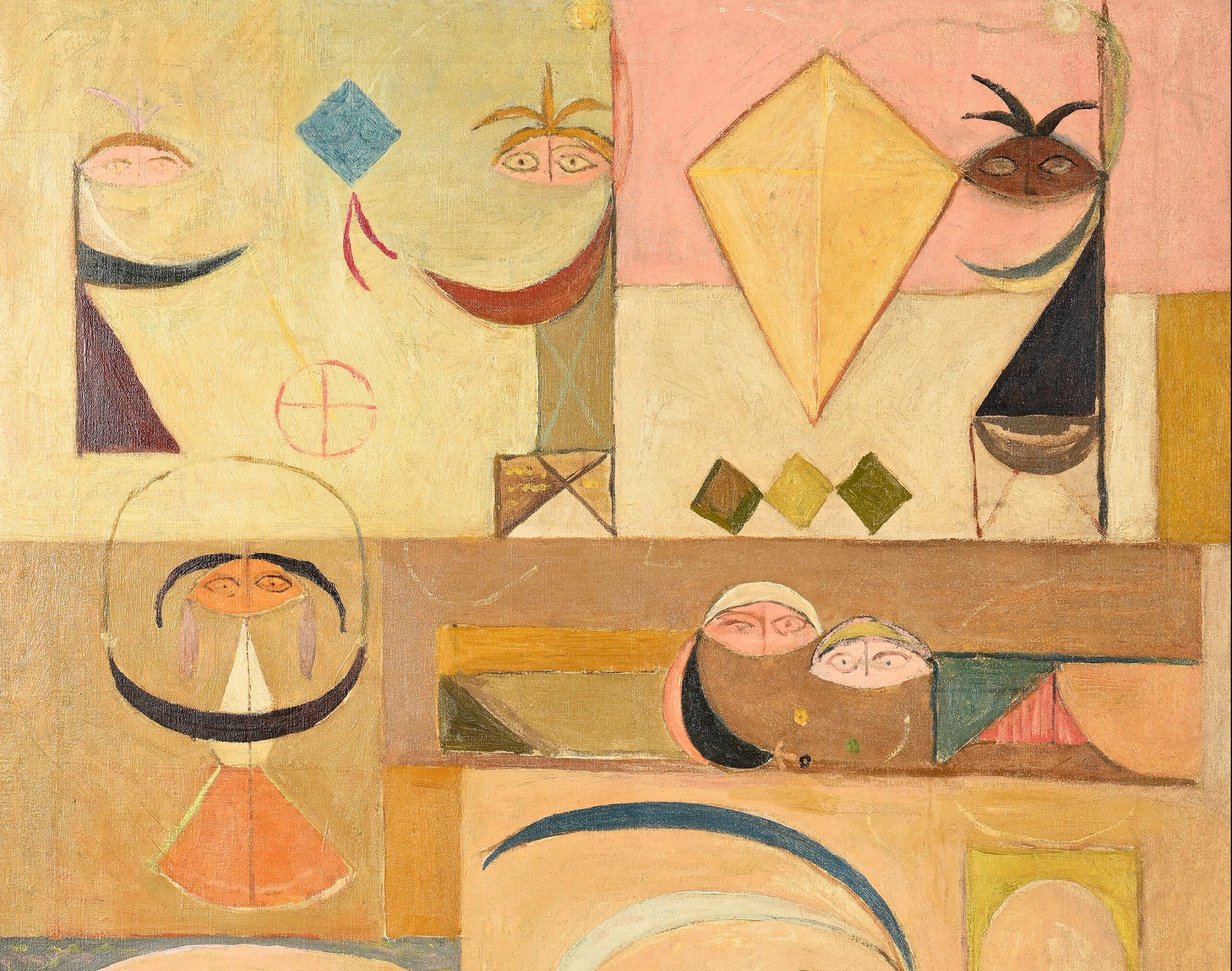
Led by artists Jawad Selim and Shakir Hassan Al Said, the Baghdad Modern Art Group sprang up in the roaring art scene and political ebullience of 1950s Iraq. Through painting, sculpture, architecture, scholarship and more, these artists and educators shaped Arab modernism via aesthetics, seeking to marry Iraqi heritage with new forms. Like the Casablanca Art School in Morocco, the Baghdad Modern Art Group played a seminal role in reinventing postcolonial identity through avant-garde art.
“All Manner of Experiments: Legacies of the Baghdad Modern Art Group” explores this important chapter of Arab modern art in an expansive survey currently on show at Bard’s Center for Curatorial Studies. Observer spoke with curator Dr. Nada Shabout, regents professor at the University of North Texas and visiting professor and investigator at NYU Abu Dhabi, about the Group’s recognition and shifting perspectives on modernism as a global, polyphonic movement. Our interview has been edited for length and clarity.
Many people would be surprised to know that Baghdad was once the capital of Arab modernism. Can you tell us more about that and the significance of the Baghdad Modern Art Group?
Very few people know that Baghdad was a vibrant city in the mid-20th Century, which was a time for vision building, for hope and optimism, when Baghdad was being modernized. Major architects, like Frank Lloyd Wright, visited and made proposals for buildings. It was what we think of Dubai today, but in the 1950s.
It was a very dynamic decade. There was a lot happening on the ground and a lot of potential for moving forward that led to the 1958 revolution in Iraq [a coup d’etat that toppled the monarchy and established the Republic of Iraq], which was ultimately optimistic for all people, including artists. The Baghdad Modern Art Group emerged at that very decisive moment of shift in history.
These artists tried to represent their new realities, their new country, their understanding of what it means to have a country with borders and a national identity. They were radical in the sense that they wanted major change. They rejected the sort of naturalism and old styles that were already dominant in Iraq. They were interested not only in representing themselves but also in connecting and contributing to the larger modernism of the world. They never thought of themselves as only local. They thought of themselves as part of a larger fabric.


Seeking inspiration from heritage was very important to these artists, an intention captured in the Arabic phrase of istilham al-turath. Can we unpack what it means?
It is not necessarily a new concept. Every post-colonial nation goes back into its history to consider what point in their history represents them or what they want to be represented by, generally a moment of prosperity, their golden age, so to speak. But what the Baghdad Modern Art Group did was to coin it in a formula that was very specific to them. Many artists at that time were also working at the Iraqi National Museum of Antiquities. They’re in the museum, they’re seeing their heritage [Assyrian, Mesopotamian, Sumerian, etc.], and they also come across the copy of a journal that was published in the 1940s, which included images from Maqamat al-Hariri [a medieval Arabic collection of tales]. In it, they saw a 13th-century painter, Yahya al-Wasati, who was doing two-dimensional representations that were not naturalist, not aiming to represent reality, but an autonomous world of their own. For that reason, they developed the notion of istilham al-turath.
The idea of istilham al-turath continues throughout the history of Iraq, which is not as simple as “seeking inspiration.” I argue that it is a dynamic concept drawing from history to an innovative contemporaneity, which is the modern moment for Iraq. There is mediation between the past and the present into a specific aesthetic that looks at, let’s say, the hilaliyat crescent shapes that Jawad Selim formulated, which takes the almond-shaped eyes of the Sumerians, for example, as well as the crescent shape. He produced work that looked like an arabesque, a decorative sort of surface, but it was also populated with action figures—it was dynamic. This is just one example of how the Group distilled this notion of istilham al-turath.
There’s a tendency to think of modernism as a Western innovation. Picasso, who is mentioned in the Baghdad Modern Art Group’s 1951 Manifesto, was a hugely influential figure for these artists. Can we nuance a view of history that often reduces modernism as a movement from the West to “the rest”?
I totally reject this notion of a hierarchy of European modernism. If we look at Picasso and think of his background as a Spaniard, Spain’s heritage is also rooted in Islamic history. We also know that modernism in Europe was rooted in colonialism and imperialism, so one wonders: Would modernism in Europe have developed in the way it did if the Impressionists had not gone to North Africa or had archaeological artifacts not moved to Europe?


If we think about modernism in Europe, we think about it as a rupture. We can’t think in these terms for Iraq, or that region, because abstraction was in their history and in their collective memory. It wasn’t something new. We have to put these things within the right context.
People in the Baghdad Modern Art Group understood that. Shakir Hassan Al Said wrote a lot and left a wealth of journals and discussions. When the Group was formed in 1951, he was a student of Jawad Selim in the Fine Arts Institute in Baghdad. He had not yet traveled. Iraqis knew modern art before they even went to Europe, but when they went to Europe, they also understood the roots of modern art in their own heritage, in their own abstraction. Selim looked at Henry Moore and didn’t think of Henry Moore as inventing something new. Moore used the same resources that Selim would use to develop new forms, which traced back to Mesopotamian heritage.


Cubism, for example, is a very naturally, instinctively accepted concept in most of the non-Western world. You look at miniatures, and you can see it. Picasso takes Cubism in a different direction, more applicable to his era, as opposed to what Muslim artists did in the 13th Century. We can’t think of European modernism as an origin and everything else as a copy.
The show presents works spanning from 1946 to 2023 from prominent artists in the Group, including Jawad Selim and Shakir Hassan Al Said, but also some who may not be household names for a wider audience today. Do you feel that there is still a deficit of recognition?
Jawad and Shakir are towering figures now—they got their space. But we also have to remember that women artists, such as Naziha Selim, Widad al-Orfali and Suad al-Attar, are not underappreciated in Iraq; they are underappreciated in the West. This notion of discovery, that they only exist when the West recognizes them, is also a problem. These artists have always been known and appreciated. It’s only now that the rest of the world is learning about them, and so they only now seem to warrant greater attention.
<





